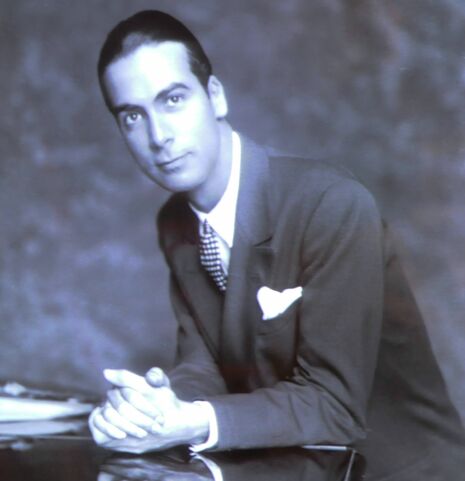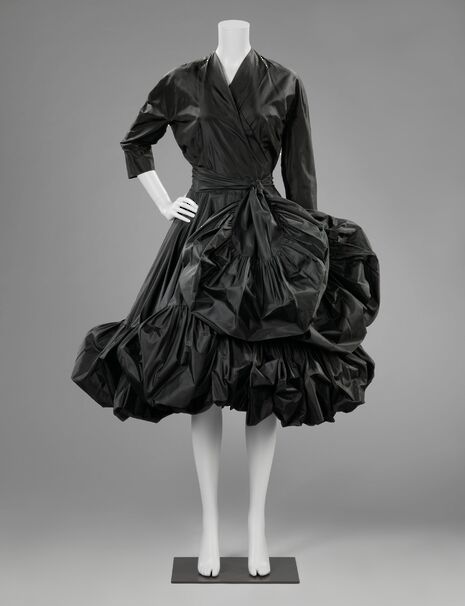Looking back at Balenciaga
Balenciaga’s incoming exhibition in London gives Robyn Schaffer the perfect occasion to come back to the history of the iconic label

It has recently been announced that, as of 2017, the Victoria and Albert Museum in London will be hosting an exhibition entitled Balenciaga: Shaping Fashion, celebrating 80 years since the opening of Balenciaga’s couture house in Paris. The exhibition will be comprised of around 100 items of clothing and accessories from the brand’s archives, including both iconic and never released pieces, from both founder Cristóbal Balenciaga and his successors at the label. But why choose to exhibit this label, and why now?
Cristóbal Balenciaga, born in the Basque region of Spain in 1895, was deemed “the only couturier in the truest sense of the word” by Coco Chanel. After being formally trained in tailoring in Madrid, Balenciaga had a hugely successful career in his native country, creating clothes for the Spanish aristocracy and royal family. However, when the arrival of the Spanish Civil War forced him to close down his stores, he relocated to Paris, where he opened his couture house in 1937. It is here where he developed his craft and became known as perhaps the greatest couturier of all time, particularly among peers such as Christian Dior and Hubert de Givenchy, in addition to being one of the very few couturiers who could physically cut and sew the clothes themselves with his own hands. Perhaps what Balenciaga is most renowned for is his transformation of the female silhouette; he broadened the shoulders, removed and manoeuvred waistlines and gave way to the tunic and chemise dresses which are still popular to this day. Additionally, he created sculptural masterpieces (something that had hitherto been a rarity) which are considered some of the greatest examples of haute couture in history.

In 1968, the couturier retired and decided to close his fashion house and all stores worldwide, remaining thus until 1986, when it was reopened with a new ready-to-wear line. Fast-forward to the 1990s, where French self-taught designer Nicolas Ghesquière joined Balenciaga under the creative direction of Josephus Thimister, where he was soon promoted to head designer in 1997. Ghesquière, who is now creative director at Louis Vuitton, revolutionised Balenciaga as we knew it and brought it to prominence once again after its closing. While respecting Balenciaga’s history of re-defining the female silhouette, he added his own twist in his collections often by creating contrasts, such as pairing tight-fitted trousers with billowing, ethereal blouses and stiff square shoulders with flowing skirts, a concept which became synonymous with Ghesquière and his brand.
However, in 2012, it was announced that Ghesquière would be leaving the brand, with Alexander Wang taking on his role. As one of my all-time favourite designers, I was excited to see what Wang (famed for his sports-luxe aesthetic) would bring to the table at Balenciaga, despite much controversy, with many claiming that Wang’s image did not fit that of the traditional label. Although Wang’s career at Balenciaga only lasted three years, it certainly made an impact. As expected, Wang brought his omnipresent sense of youth and sleekness to Balenciaga, all the while paying tribute to the traditions which Cristóbal had instilled in his label from the very beginning. Following the legacy of the founder, Wang took it upon himself to experiment with fabrics and the proportions of the body, injecting the brand with a boost of vitality. Wang’s last show saw him create an all-white collection, loose-fitting and flowing in contrast to his usually sharper sportswear-inspired looks, providing a clean slate for his successor.
After Wang’s relatively short stint, Georgian designer and leader of Parisian design collective Vetements, Demna Gvasalia took over. Having worked previously alongside Nicolas Ghesquière at Louis Vuitton, this seemed like an obvious choice to continue the image created thus far at Balenciaga, largely thanks to Ghesquière’s contribution during his 15 years. Gvasalia, like Wang and Ghesquière before him, stayed true to Balenciaga’s roots by creating structurally interesting pieces which defy the norms of the female shape, creating wider scope for creativity and experimentation in an industry which can be prone to repetition. At Vetements, Gvasalia has established himself as the king of luxe street-wear, specialising in oversized hoodies, boxy shirts and jeans that sell for a whopping $1,000. Gvasalia has brought this talent for making the ordinary extraordinary to Balenciaga; he has taken Cristóbal’s affinity for broadened shoulders and added it to trench coats, leather jackets and blazers while still retaining more feminine elements in the form of energetic bursts of colour and elegant accessories.
And so, Balenciaga has undergone several transformations in its time, yet it has still remained to this day one of the most successful and revolutionary fashion houses in the world. Hopefully, the exhibition at the V&A will reflect Balenciaga’s immense sartorial journey, from Cristóbal’s innovative approach to haute couture all the way through to Gvasalia’s modern take on classic pieces which have radically changed the both the fashion industry and the way women dress indisputably
 News / Police to stop searching for stolen Fitzwilliam jade17 April 2024
News / Police to stop searching for stolen Fitzwilliam jade17 April 2024 News / Copycat don caught again19 April 2024
News / Copycat don caught again19 April 2024 Interviews / ‘It fills you with a sense of awe’: the year abroad experience17 April 2024
Interviews / ‘It fills you with a sense of awe’: the year abroad experience17 April 2024 News / Night Climbers call for Cambridge to cut ties with Israel in new stunt15 April 2024
News / Night Climbers call for Cambridge to cut ties with Israel in new stunt15 April 2024 News / Acting vice-chancellor paid £234,000 for nine month stint19 April 2024
News / Acting vice-chancellor paid £234,000 for nine month stint19 April 2024




